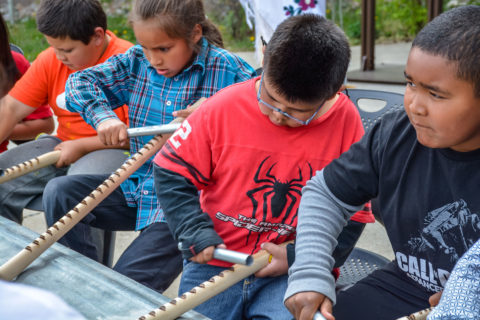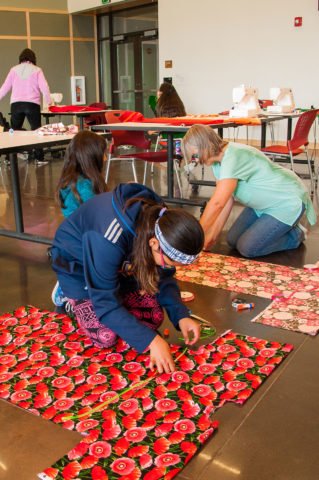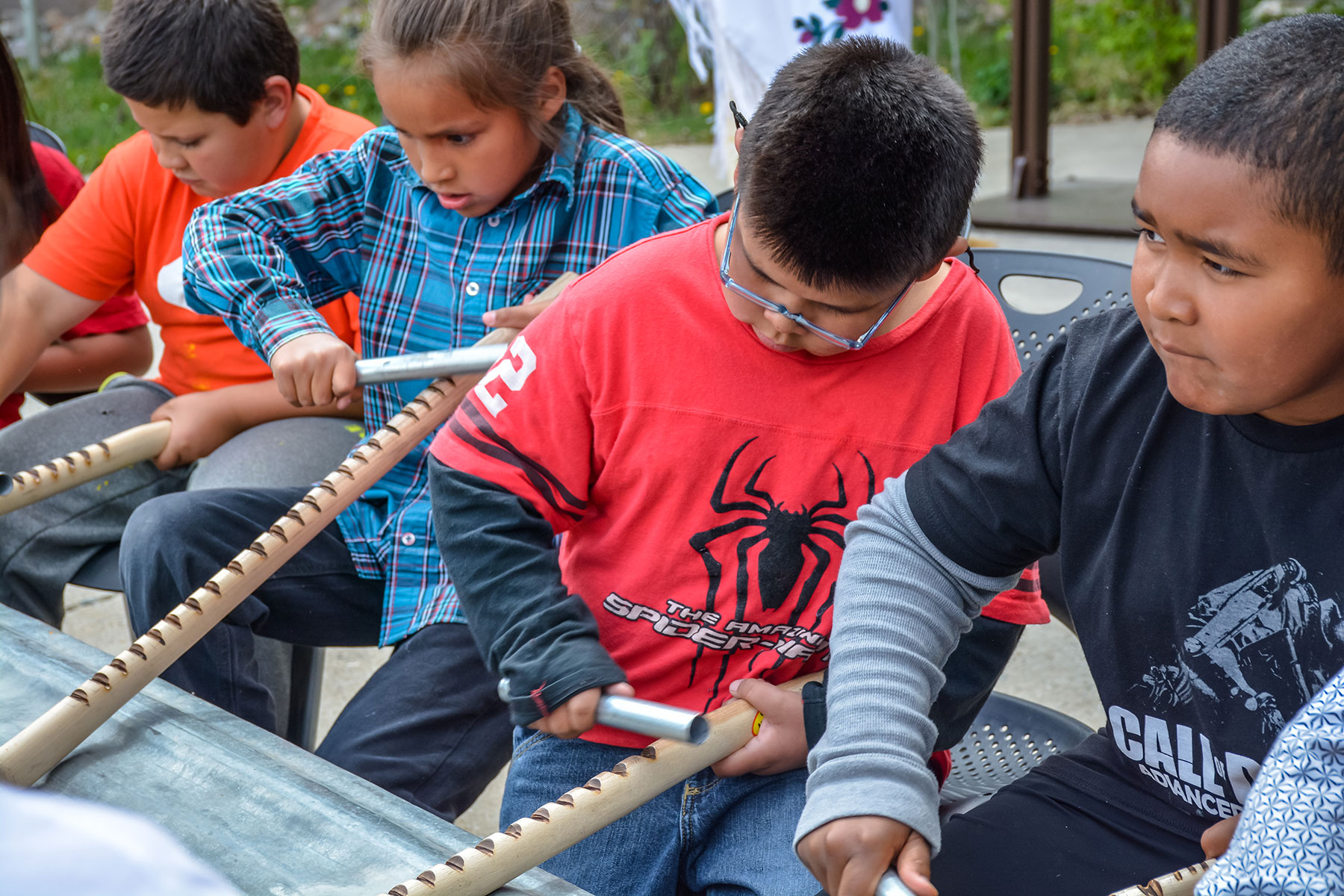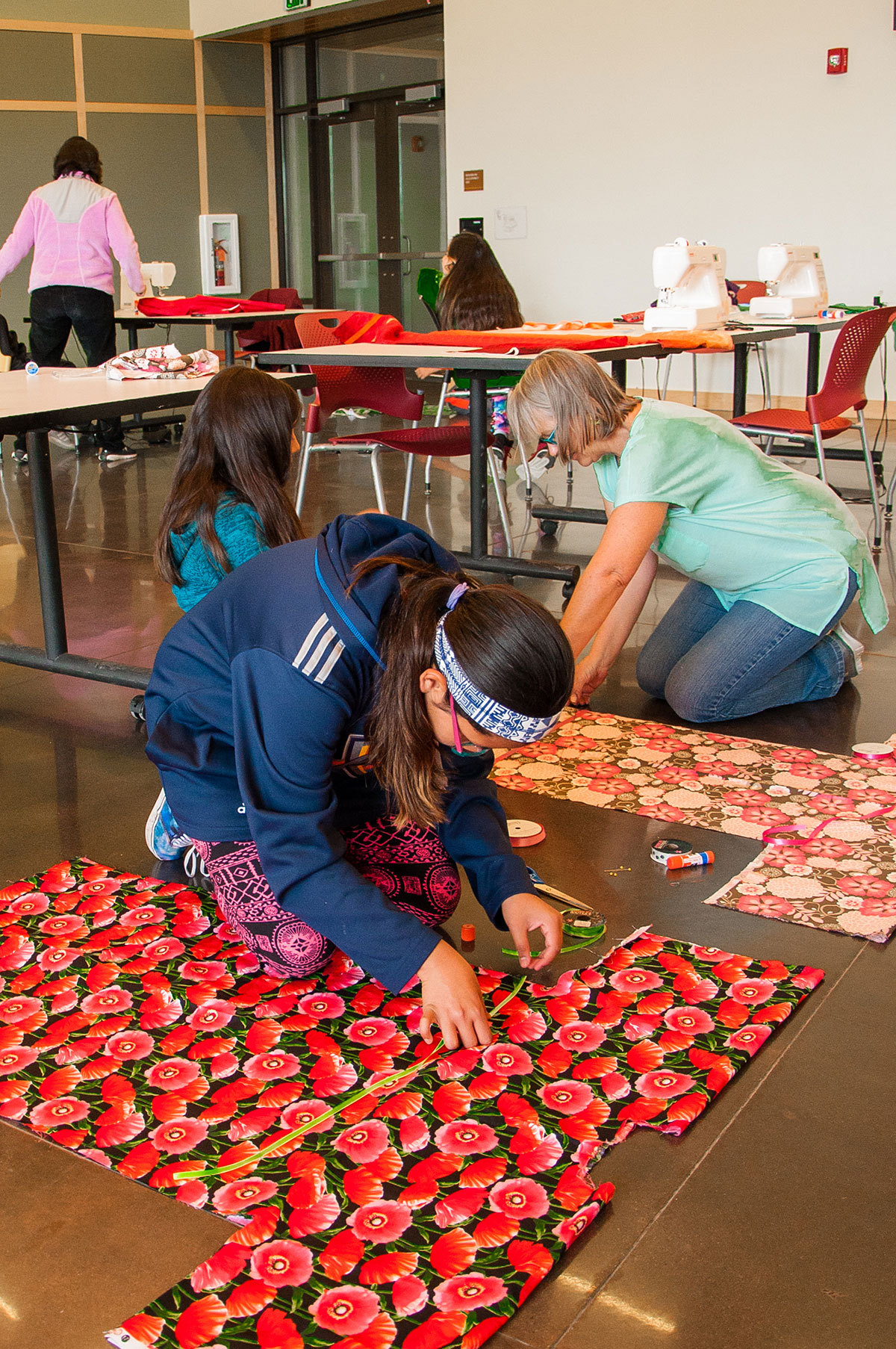When the first thunderstorms rumbled in the spring, Utes begin to prepare for their annual Bear Dance. The dance is held each year to ensure success and survival through the year. It is also a dance that is one of the oldest recorded dances in North American history.
The Southern Ute Indian Montessori Academy (SUIMA) does their own part in preparing the youth by sharing cultural awareness and history. By influencing these young tribal members and descendants early, they ensure that the culture, language and history can be successfully kept alive. “This is my favorite time of the year,” SUIMA Ute Language Guide, Shawna Steffler shared.

The language class has dedicated countless hours to helping the students craft their very own ribbon skirts and shirts to wear when they help open the Bear Dance. For years, the SUIMA students have danced the very first round at Bear Dance, it’s a way for them to be involved and “because it gives them a sense of pride and independence,” SUIMA Language Guide, Dr. Stacey Oberly said. “We want to give the kids the skills to demonstrate their knowledge.”
At one point in time, the Bear Dance was not in practice. In 1906, the dance was discontinued for a few years because it was thought to be too time consuming, according to the then Commissioner of Indian Affairs, Francis Leupp. In the late 1920’s, all dances were outright forbidden and while many thought this would discourage the Utes. It only inspired them to continue with the Bear Dancing even more faithfully.
Helping bring the hiatus to an end after the years of repression, the Southern Utes spent weeks prepping to revive the Bear Dance. Families volunteered time to build the arbor, gather food and spread the news of the Bear Dance.
Mimicking those same preparations, SUIMA students have spent weeks working on getting their regalia together with the help of the language guides and their teachers. In April of 2019, the Academy brought in Southern Ute Elder, Ramona Eagle and former language guide, Nathan Elk to teach the kids about their specific roles in the Bear Dance.

Gender has been a major determination of what preparations are given out, men are the ones who prepare the corral, while women prepare the colorful clothing that adorns the dancers.
“When Ramona talked to the girls it was nice for me to hear her stories and how she remembered the dances when she was younger,” Steffler stated. Eagle spent time with the girls at the Academy, explaining to them the proper etiquette that they should follow while attending the celebration. She shared with them the importance of knowing who their family members are and encouraged them to ask questions.
Nathan, took boys out to the center of the school and taught them traditional Bear Dance songs. He explained the significance of the growlers and how they represent the bear. He helped each boy learn the movements and rhythm of the well-known Bear Dance songs.
As the Southern Ute Bear Dance nears, the community can feel the excitement in the air. The dedication and time that departments, families and the Bear Dance Chief have given to the celebration are becoming clear. Their work ensures that this year’s celebration will be a healing and joyous time. While the dance has seen many changes throughout its time, it still remains one of the pinnacle foundations and reason for the gathering of tribal people. It is still seen as a time for celebration of life.
Join the community and the Southern Ute Tribe as this year’s Bear Dance and Bear Dance Powwow commences — Friday, May 24 through Monday, May 27.




